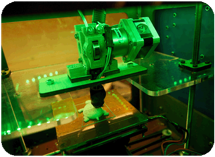In the 1960s Northeast Italy’s artisans banded together to form small family-owned businesses that depended closely on one other. Each company manufactured a single part of a finished product that held the entire town’s attention. For instance, the tiny burg of Montebelluna specialized in making ski boots, with dozens of companies contributing parts like buckles and foam linings. The town eventually became famous for its high quality footwear, producing about three-quarters of the world’s ski boots at its height. One Italian municipality once produced 70 percent of Europe’s chairs, a testament to the region’s commitment to quality.
But like many other industrial centers in the global age, Northeast Italy’s dedicated artisans couldn’t compete against the rising industrial giants of Asia. The financial crisis only made matters worse as the region’s industrial sector phased out more than 135,000 jobs since 2008, approximately 17 percent of its total workforce. While companies in the region knew they had to adapt to this new environment, many artisans were not willing to change the renowned quality of their goods. “We needed to find an escape route,” said Ignazio Pomini, president of an automotive manufacturer near Venice. “To use the same technology, the same skills, the same space, the existing investments, but for a new business.”
The advent of 3D printing provided Pomini with the perfect opportunity to expand into new horizons. The entrepreneur teamed up with a local artist and together they began to manufacture a complicated and stylish series of lamps using Pomini’s collection of additive printers. Along with making quick and affordable prototypes, 3D printing also allowed the company to create lamp designs that would have been impossible to manufacture otherwise. Pomini is now using this strategy to create 3D printed jewelry, and he’s far from the only Italian to put the technology to the test. One research firm estimates that 3D printing and other innovations can boost revenues at Italy’s small-scale manufacturers by as much as 15 percent, or $17.8 billion. The region’s trade schools now include 3D printing and laser cutting programs in the curriculum so that future artisans can continue to make objects of timeless quality on a timely budget.
Questions:
- Will 3D printing change operations in other industries?
- What’s an important lesson to learn from the Italian artisans?
Source: Stephan Faris, “How 3D Printing Is Saving the Italian Artisan,” Bloomberg BusinessWeek, May 5, 2015. Photo by: Keith Kissel.

